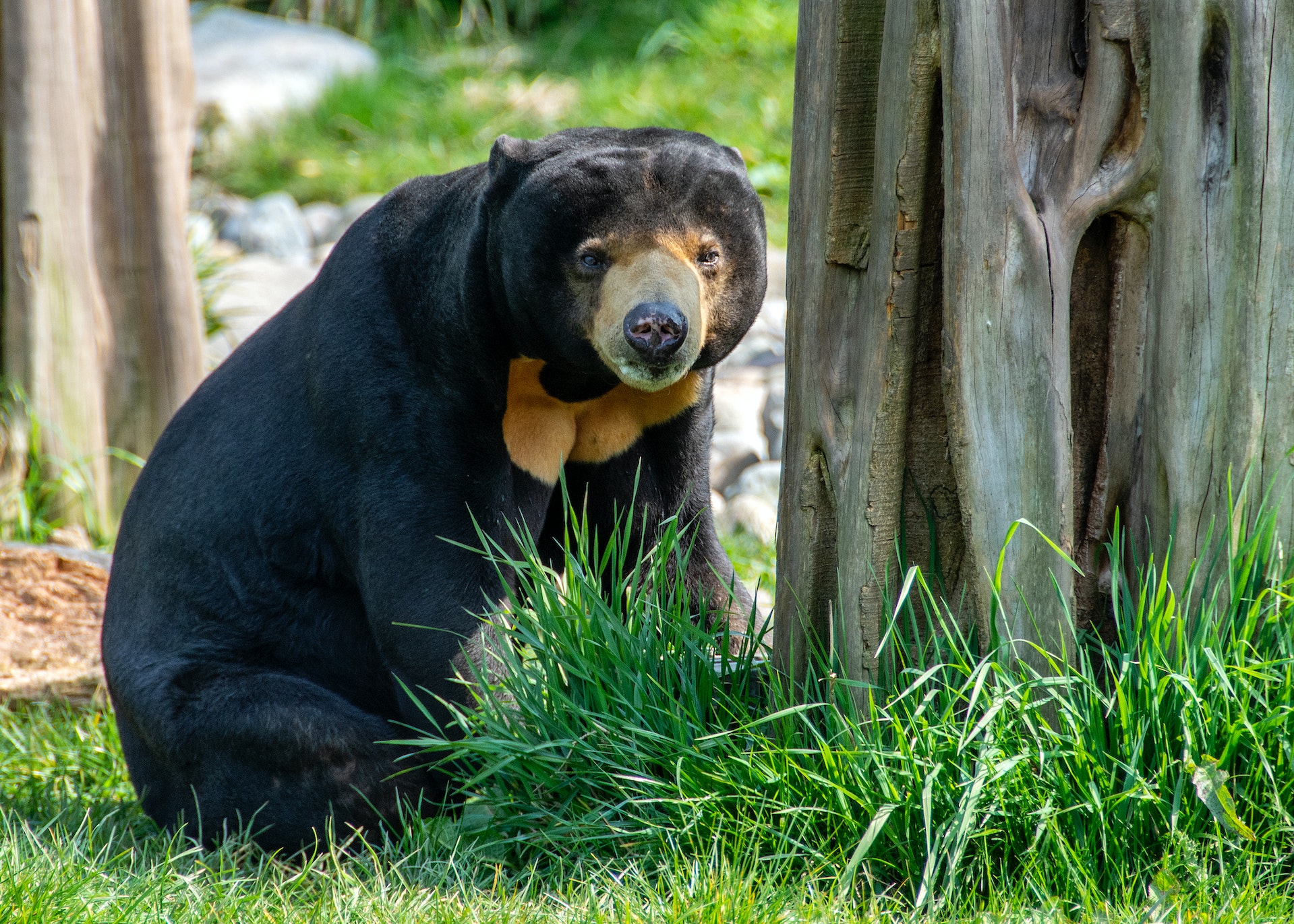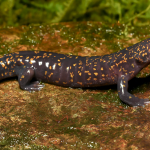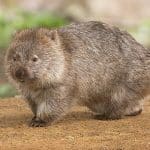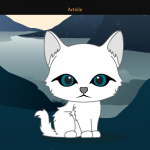There are 8 bear species in the world. They are the Asiatic black bears (also called moon bears), brown bears (including grizzly bears), black bears, giant pandas, polar bears, sloth bears, spectacled bears (also called Andean bears), and sun bears.
And just like any animal, bears come in diverse sizes and colors. The Kodiak bear, along with the polar bear, are the world’s largest bear species. They typically weigh over 1,700 lbs and can grow up to 10 feet long. So imagine how big they are!
But have you ever heard of the smallest bear in the world? If you haven’t yet, let me introduce you to the sun bear.
The sun bear, its scientific name Helarctos malayanus, is the smallest living bear species. Its generic name Helarctos originated from two greek words, hēlios, which means related to the sun, and arctos, meaning bear. Other common names of this bear species include Malayan sun bears, bruang, or honey bears.
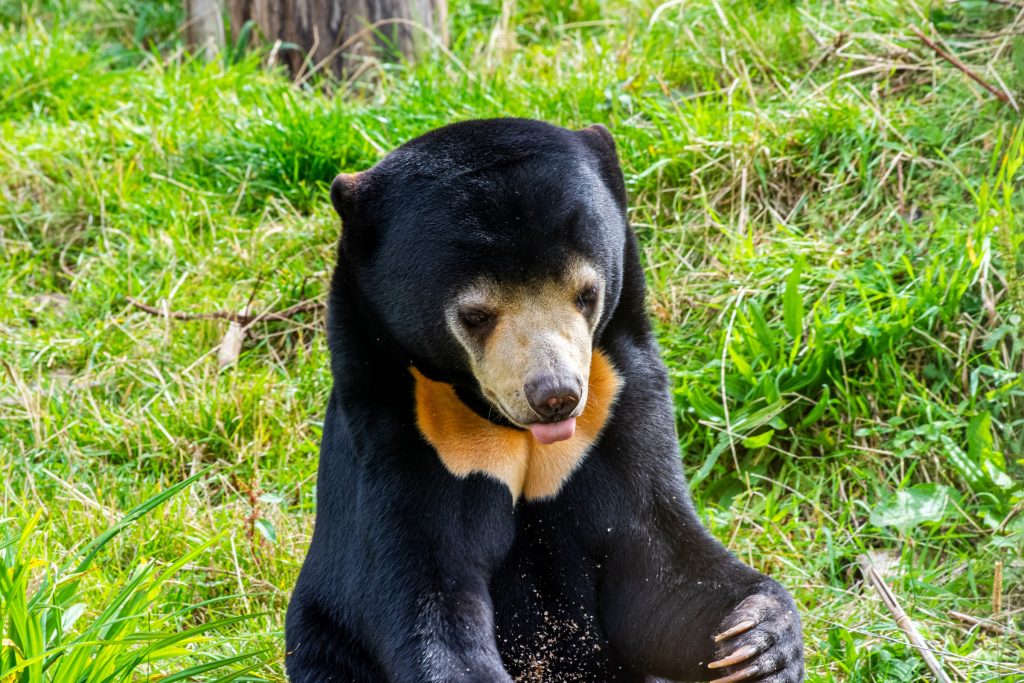
Sun bears can be found in the wooded areas of Southeast Asian forests. They typically live up to 25 years. However, unlike other bear species, it only grows about 4 to 5 feet long and weighs about 60 to 150 pounds.
You can identify a sun bear by its jet-black coat of short, coarse fur and distinctive orange, cream to golden patch shaped like a bib on its chest. According to legend, this patch on its chest represents the rising sun, hence the common name sun bear.
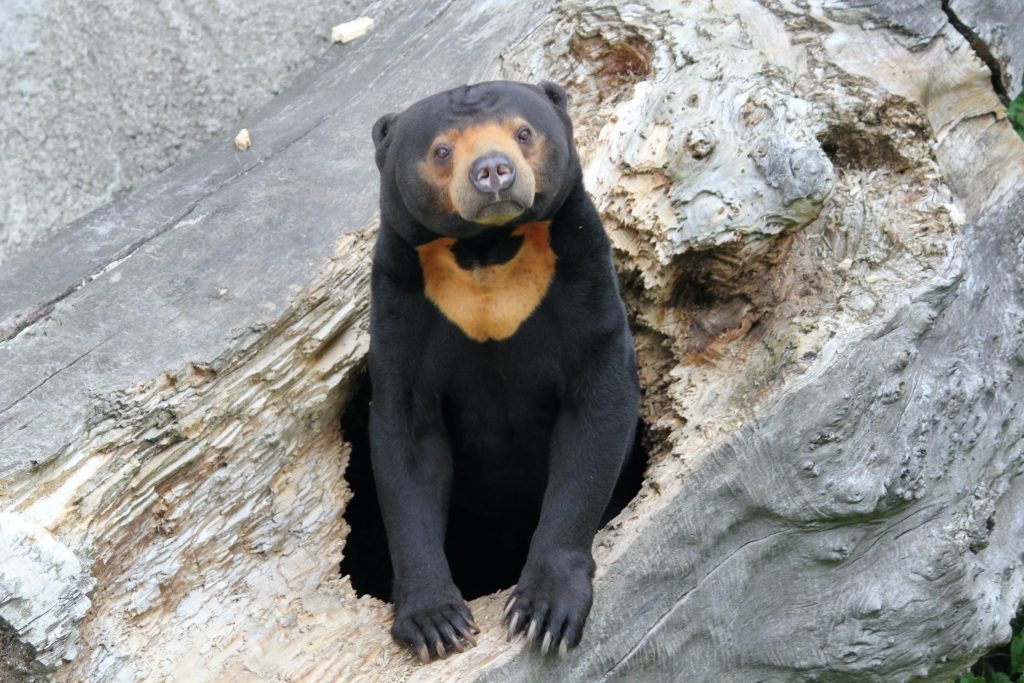
Moreover, sun bears are arboreal animals, which means that they live mostly in trees. They usually sleep, eat, and sunbathe around 23 ft above the ground. Their strong curved claws, large paws, and smaller body than other species makes them good at climbing trees.
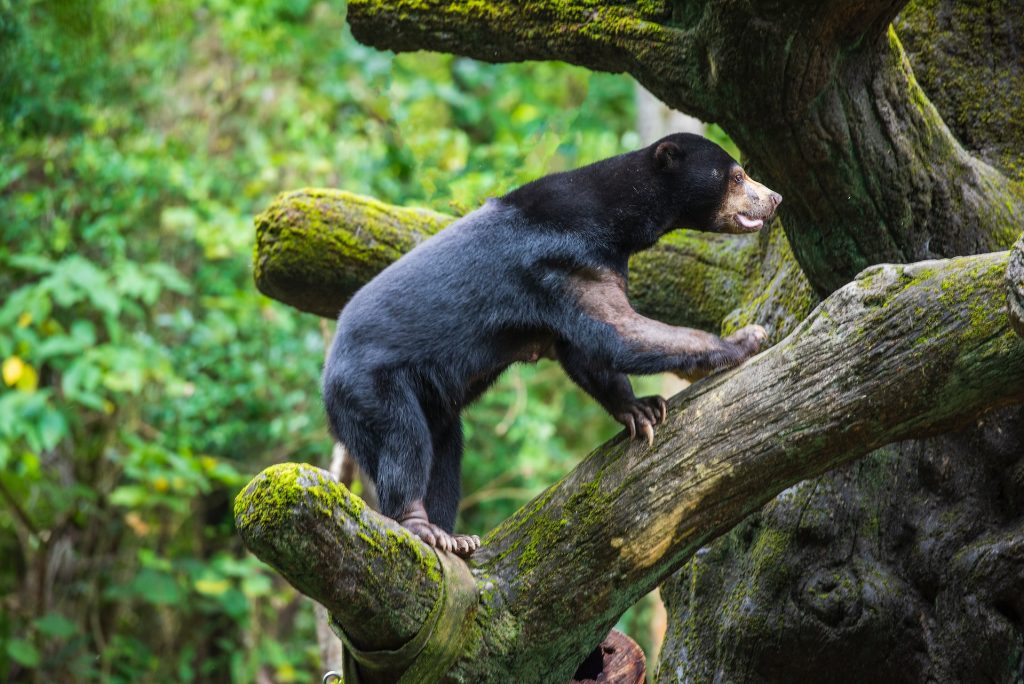
How about the sun bears’ diet?
They are omnivores, which are animals that eat both plants and animals. Sun bears usually eat bees, ants, beetles, termites, birds, and other small mammals. Their diet also includes fruits, seeds, and palm tree tips! But their favorite snack is honey and bees’ nests — why they are often called honey bears.
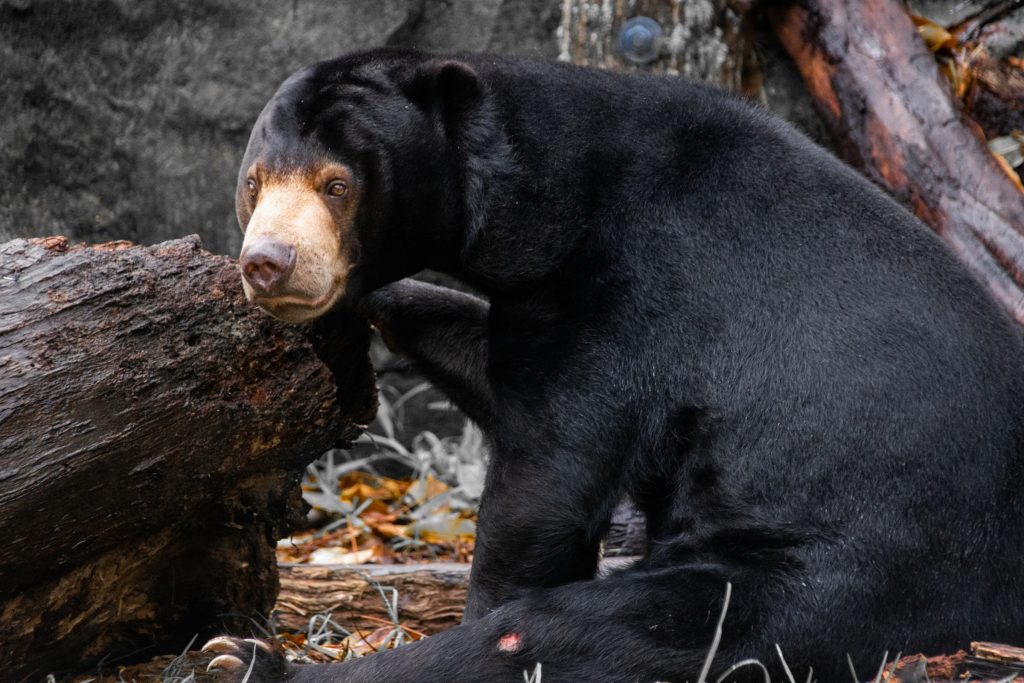
They use their large paws with long curved claws to tear or dig in search of insect nests and colonies under logs. They also use it to rip open beehives. Then, their nearly 10-inch-long tongue rolls out and extracts the treat inside (honey or insects) until their belly is full!
Unfortunately, sun bears are considered vulnerable now due to large-scale deforestation in their habitats. Their population continues to shrink because they are often poached or harvested for parts, such as their gallbladders for use in traditional medicine. Sadly, young sun bears are also often traded as pets.
According to conservationists, less than 1,000 of these bears could be left in the wild. The good thing is that killing sun bears is strictly prohibited now under national wildlife protection laws.
Specific zoos also help support the conservation of sun bears by increasing public awareness of how to protect these animals.
